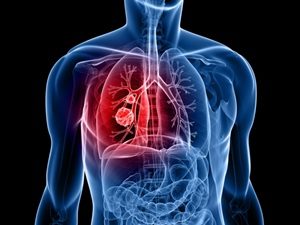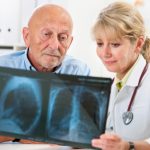 Trouble breathing? Persistent cough or frequent chest infections? This could be chronic obstructive pulmonary disease (COPD) – the name for a collection of lung diseases including chronic bronchitis, emphysema and chronic obstructive airways disease. COPD exacerbation is not something you want to fool around with. Your body needs oxygen and you need to breathe!
Trouble breathing? Persistent cough or frequent chest infections? This could be chronic obstructive pulmonary disease (COPD) – the name for a collection of lung diseases including chronic bronchitis, emphysema and chronic obstructive airways disease. COPD exacerbation is not something you want to fool around with. Your body needs oxygen and you need to breathe!
People with COPD have difficulties breathing, because of the narrowing of their airways, which is suitably called airflow obstruction. While you can’t reverse the damage, it is important that COPD is diagnosed as early as possible to make you more comfortable, for one, and so treatment can be used to try to slow down the deterioration of your lungs.
What is COPD
Advertisement
 When it comes to understanding exactly what is COPD, we need to take a look at the two most common conditions: Emphysema and chronic bronchitis. Emphysema happens when the air sacs (alveoli) at the end of the smallest air passages (bronchioles) in the lungs are gradually destroyed.
When it comes to understanding exactly what is COPD, we need to take a look at the two most common conditions: Emphysema and chronic bronchitis. Emphysema happens when the air sacs (alveoli) at the end of the smallest air passages (bronchioles) in the lungs are gradually destroyed.
Chronic bronchitis occurs when the lining of your bronchial tubes, which carry air to and from your lungs, becomes inflamed. Either way, bad news.
When the oxygen in the air you inhale enters your bloodstream, carbon dioxide – a gas that is a waste product of metabolism – is exhaled. So your lungs rely on the elasticity of the bronchial tubes and air sacs to force air out of your body. COPD, however, puts the brakes on the process. It causes the bronchial tubes and air sacs to lose their elasticity and partially collapse, which leaves some air trapped in your lungs when you exhale.
The problem is, too, that symptoms of COPD often don’t show up until significant lung damage has already happened. Symptoms usually worsen over time. For chronic bronchitis, the main symptom is a persistent cough that you have at least three months a year for two consecutive years. You develop a chronic cough trying to clear your airways.
Other signs and symptoms of COPD
According to the Mayo Clinic, other signs and symptoms of COPD include:
- shortness of breath, especially during physical activities
- wheezing
- chest tightness
- having to clear your throat first thing in the morning, because of excess mucus in your lungs
- chronic cough that produces sputum that may be clear, white, yellow or greenish
- blueness of the lips or fingernail beds (cyanosis)
- frequent respiratory infections
- lack of energy
- weight loss (in later stages).
To note, people with COPD may experience episodes called exacerbations – COPD exacerbation – where their symptoms become worse and persist for days or longer.
A diagnosis of COPD often comes with an explanation of COPD stages. There are four stages with the last ominously referred to as the “end stage.” This is not a death sentence! People with stage 4 COPD can live for years, even with severely compromised lung capacity.
The following breakdown from Healthline outlines the four COPD stages:
- Stage 1: Mild COPD with only mild airflow limitation. In this stage a patient might not even be aware that there is an abnormality in lung function.
- Stage 2: Moderate COPD with progressing airflow limitation. This is most commonly the stage at which people seek medical help for chronic symptoms, often shortness of breath during exertion or even exacerbation of COPD.
- Stage 3: Severe COPD with airflow limitation that is progressing even further and impacting the patient’s quality of life because of greater shortness of breath and reduced exercise capacity.
- Stage 4: Very Severe COPD with severe airflow limitation and exacerbations that are life-threating. An impaired quality of life is also common with this stage.
Causes of COPD
 What causes COPD, and what puts you most at risk? Smoking. In the majority of cases, the lung damage that leads to COPD is caused by long-term cigarette smoking. But there are other factors at play, because only about 20 percent of smokers develop COPD.
What causes COPD, and what puts you most at risk? Smoking. In the majority of cases, the lung damage that leads to COPD is caused by long-term cigarette smoking. But there are other factors at play, because only about 20 percent of smokers develop COPD.
However, the likelihood of developing COPD increases the more you smoke and the longer you’ve been smoking. Not surprising, smoking irritates and inflames the lungs. This leads to scarring and permanent changes in the lung. Symptoms of breathlessness, cough and phlegm associated with COPD are sure to follow.
- Smoking: Enemy to your lungs which causes scarring and permanent damage.
- Fumes and dust: Air pollution or workplace fumes and dust. In the developing world, COPD occurs in women exposed to fumes from burning fuel for cooking and heating in poorly ventilated homes.
- Asthma: This chronic airway disease means your lungs are already compromised. If you have asthma and also smoke, the combination puts you at high risk for COPD.
- Age: COPD develops slowly over the years. Most people are 35 to 40 when symptoms begin.
- Secondhand smoke: Pipe smokers, cigar smokers, marijuana smokers and people exposed to large amounts of secondhand smoke also are at risk.
- Genes: genetic susceptibility to the disease or an uncommon genetic disorder known as alpha-1-antitrypsin deficiency.
Best way to protect yourself? If you’re a smoker, quit now! Protect your lungs from damage. Treatments for COPD involve medication to relieve symptoms, such as using an inhaler to make breathing easier. Pulmonary rehabilitation may also help to increase your activity level and the amount of exercise you are capable of doing.
If you have COPD, lifestyle changes can reduce the impact; regular exercise and being active are recommended. Healthy eating, breathing techniques and taking your medication as prescribed will also go a long way to reduce the symptoms of COPD.
Understanding COPD, what causes COPD, and the risk factors can help you take steps to protect your lungs from damage. See your doctor if you’re concerned. An early diagnosis and intervention can improve your quality of life – and help you breathe deep!
Related Reading:
Is bronchitis contagious? Types and symptoms of bronchitis
Bronchitis or inflammation of the bronchi, which carry air to the lungs, is a common condition, so people wonder, is bronchitis contagious? The answer is not cut and dry – it really depends on the type of bronchitis. Continue reading…
“Giving up smoking is the easiest thing in the world. I know because I’ve done it many times.” – Mark Twain.
Advertisement
With all due respect to Mr. Twain, he didn’t quit hard enough. The successful mantra to kick the habit is, “If at first you don’t succeed, quit, quit again.” Find out how to do it here.
Asthma, COPD and bronchitis: Key differences in common respiratory diseases
Common respiratory diseases like asthma, bronchitis and COPD can seriously impact a person’s quality of life, but proper diagnosis and treatment can help those who suffer live more comfortably. Continue reading….

